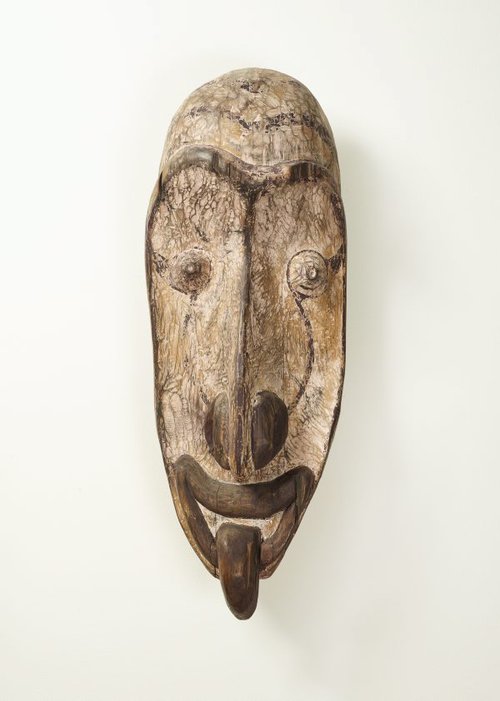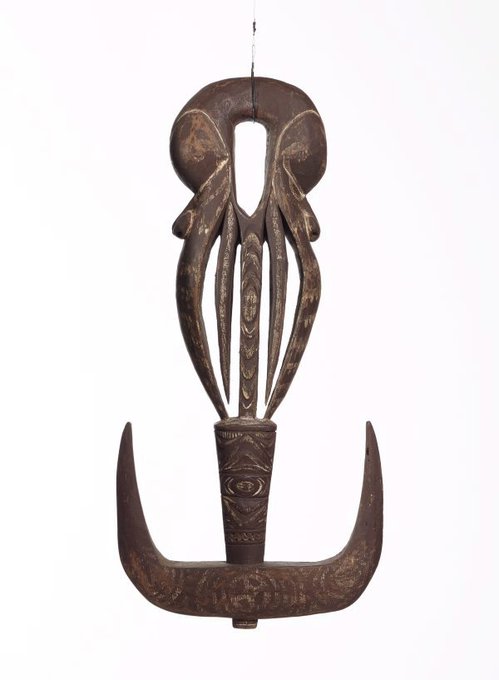-
Details
- Place where the work was made
-
Middle Sepik River
→
East Sepik Province
→
Papua New Guinea
- Cultural origin
- Iatmul people
- Dates
- mid 20th century
collected 1965 - Media categories
- Sculpture , Ceremonial object
- Materials used
- wood, sago palm petiole, cane, earth pigments
- Dimensions
- 137.0 cm height
- Signature & date
Not signed. Not dated.
- Credit
- Gift of Todd Barlin 2020. Donated through the Australian Government's Cultural Gifts Program
- Location
- Not on display
- Accession number
- 182.2020
- Artist information
-
Iatmul people
Works in the collection
- Share
-
-
About
Sepik masks vary in style considerably depending on their place of origin, with some used as part of elaborate dance costumes, while others are used for display on canoes and sacred flutes or as private amulets, and range in size from very small to those over a metre tall. Masks have a transformative power and are always made and worn by initiated men, with their meaning emerging over many decades of participation in ceremonial life.
This mask, comprises a head carved in wood and painted with white, black and red pigments, attached to a conical structure made from the flattened petioles of the sago palm. It was most likely part of a full-body costume, with the circular lower edge used to attach leaf strips and other ornamentation, which would be dismantled after the ceremony.
This mask was collected by Australian geologist Peter Austin, who travelled through the Sepik region in 1965-66 and assembled a comprehensive collection of material culture from the Pacific, which is now held at the Royal Ontario Museum in Toronto.
The wooden head closely resembles another held by the Gallery's, collected by Australian businessman Stanley Moriarty at Pagwi village in 1963, and decorated with cassowary feathers.



